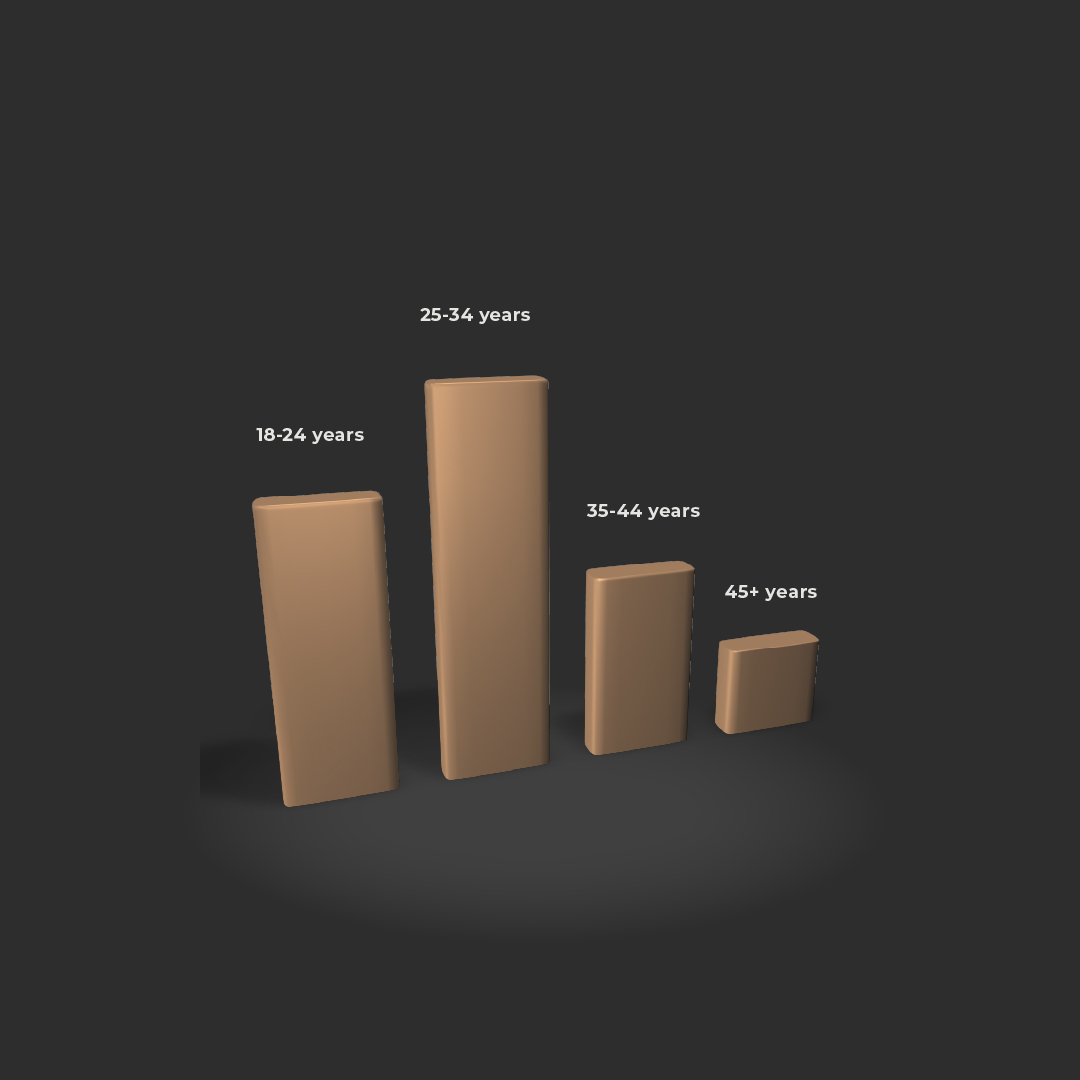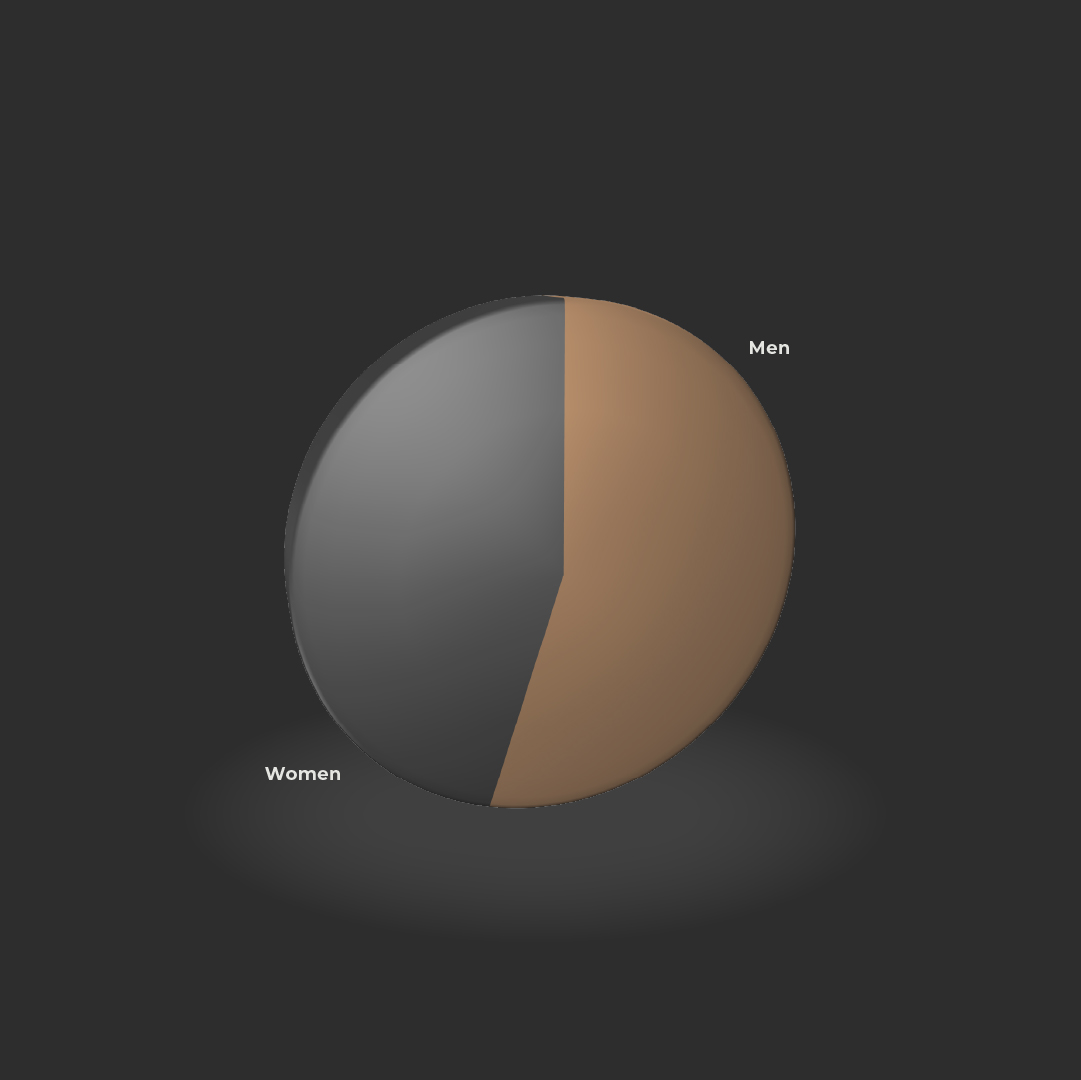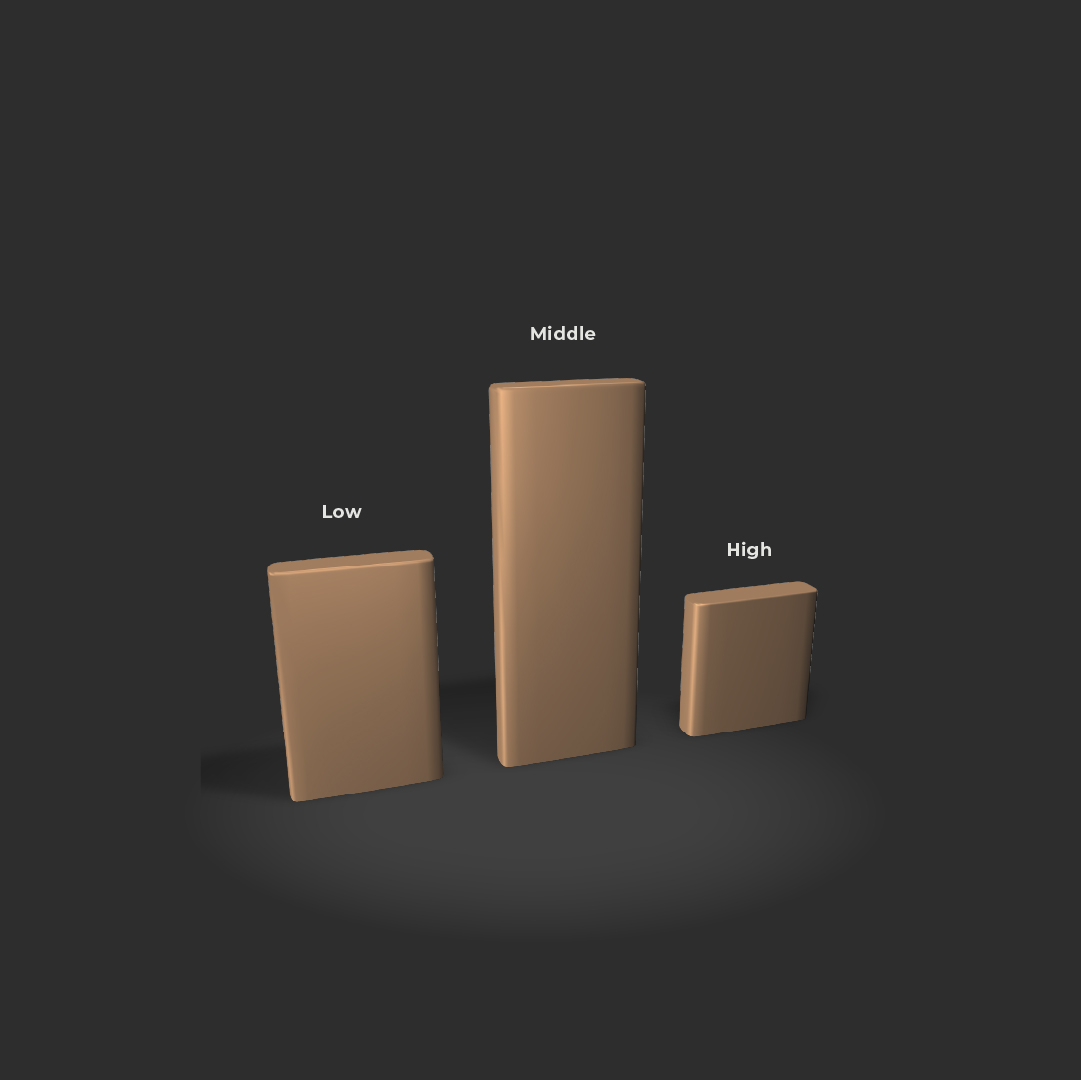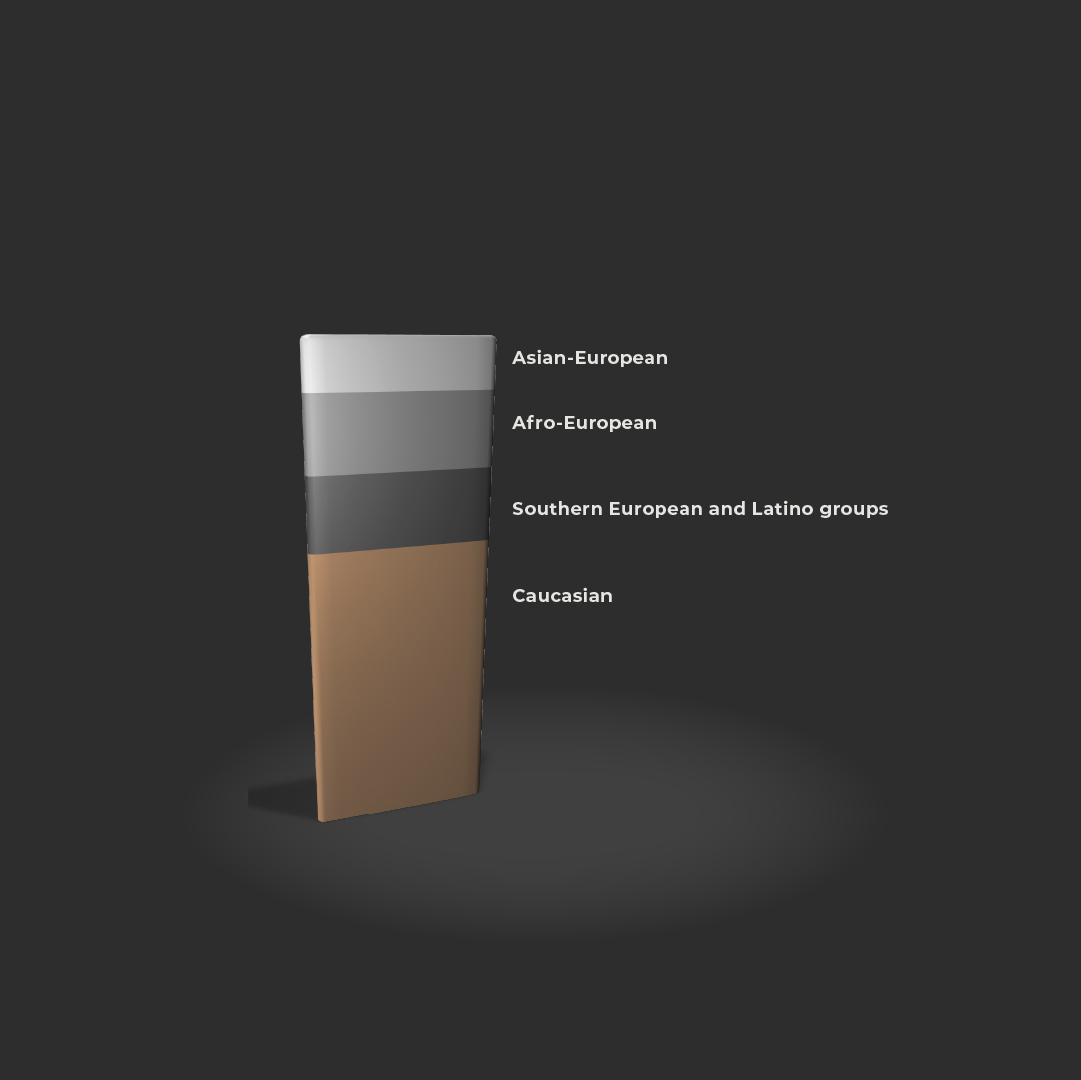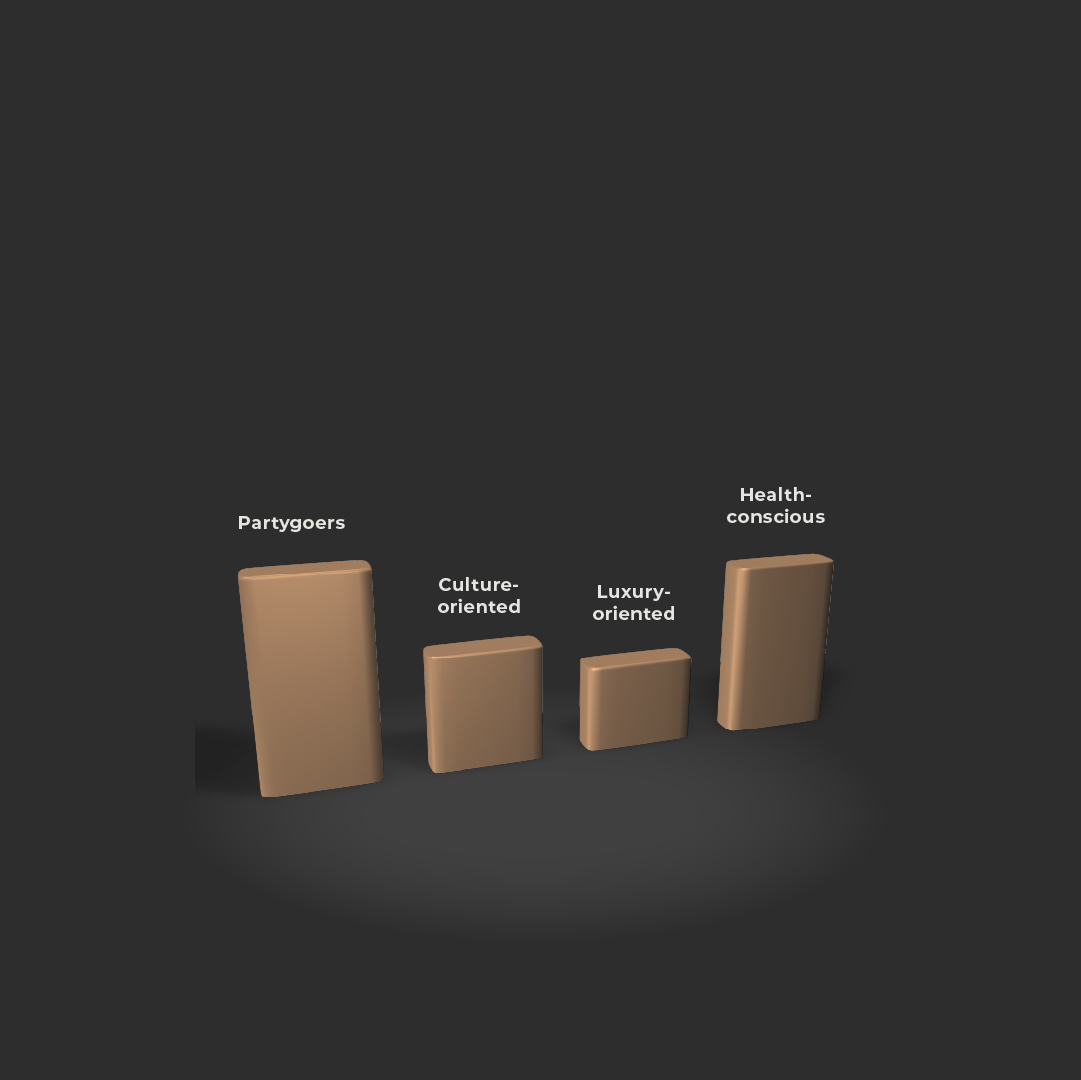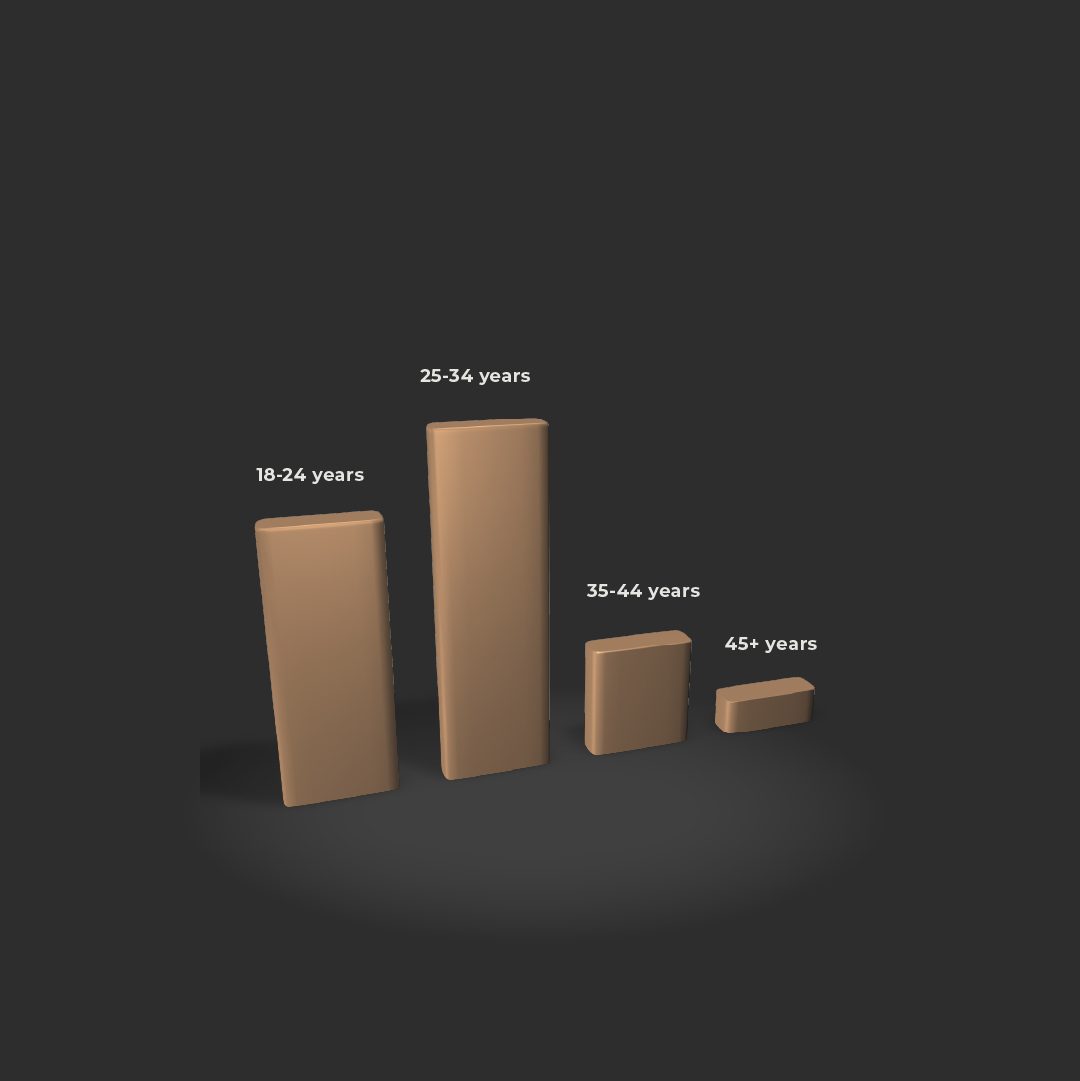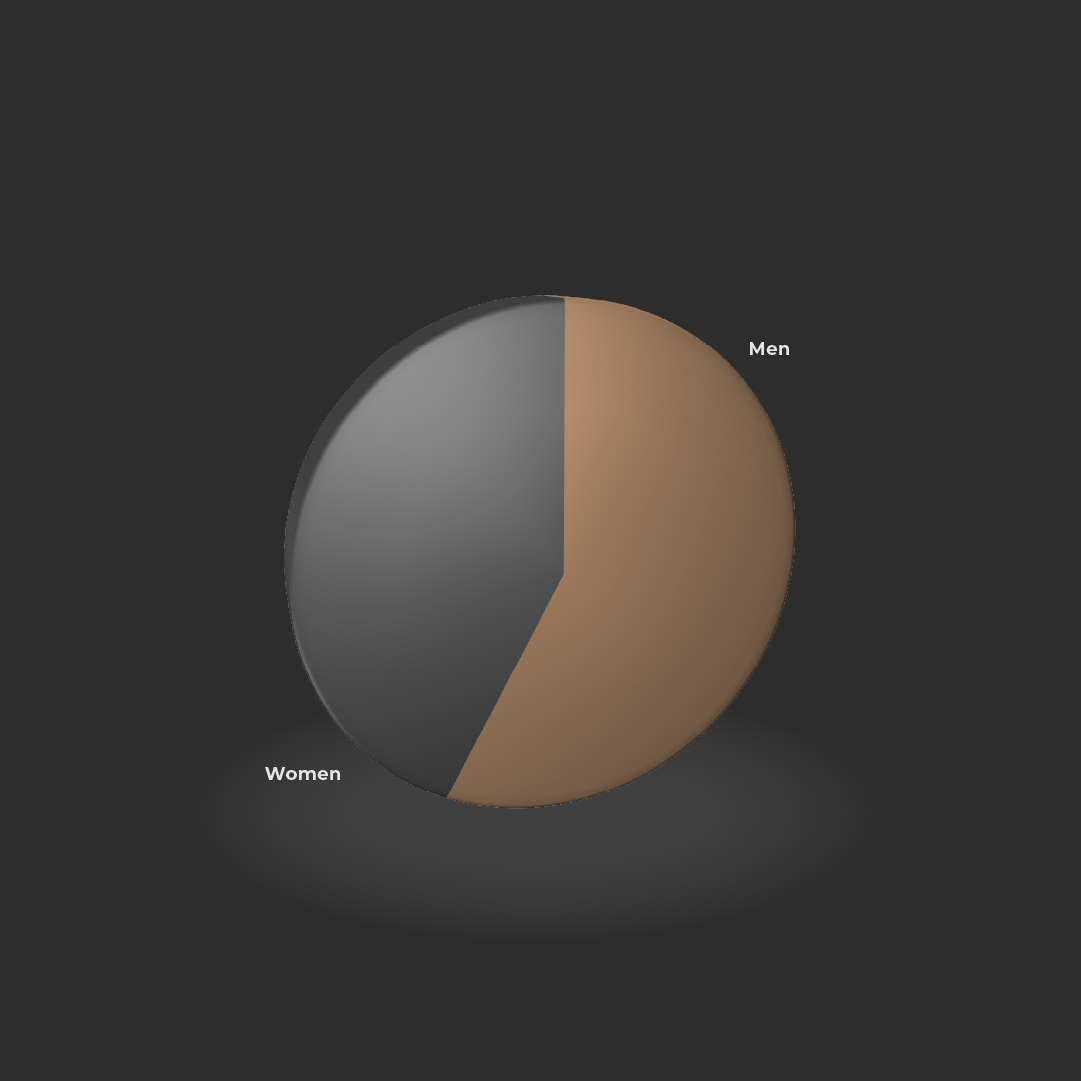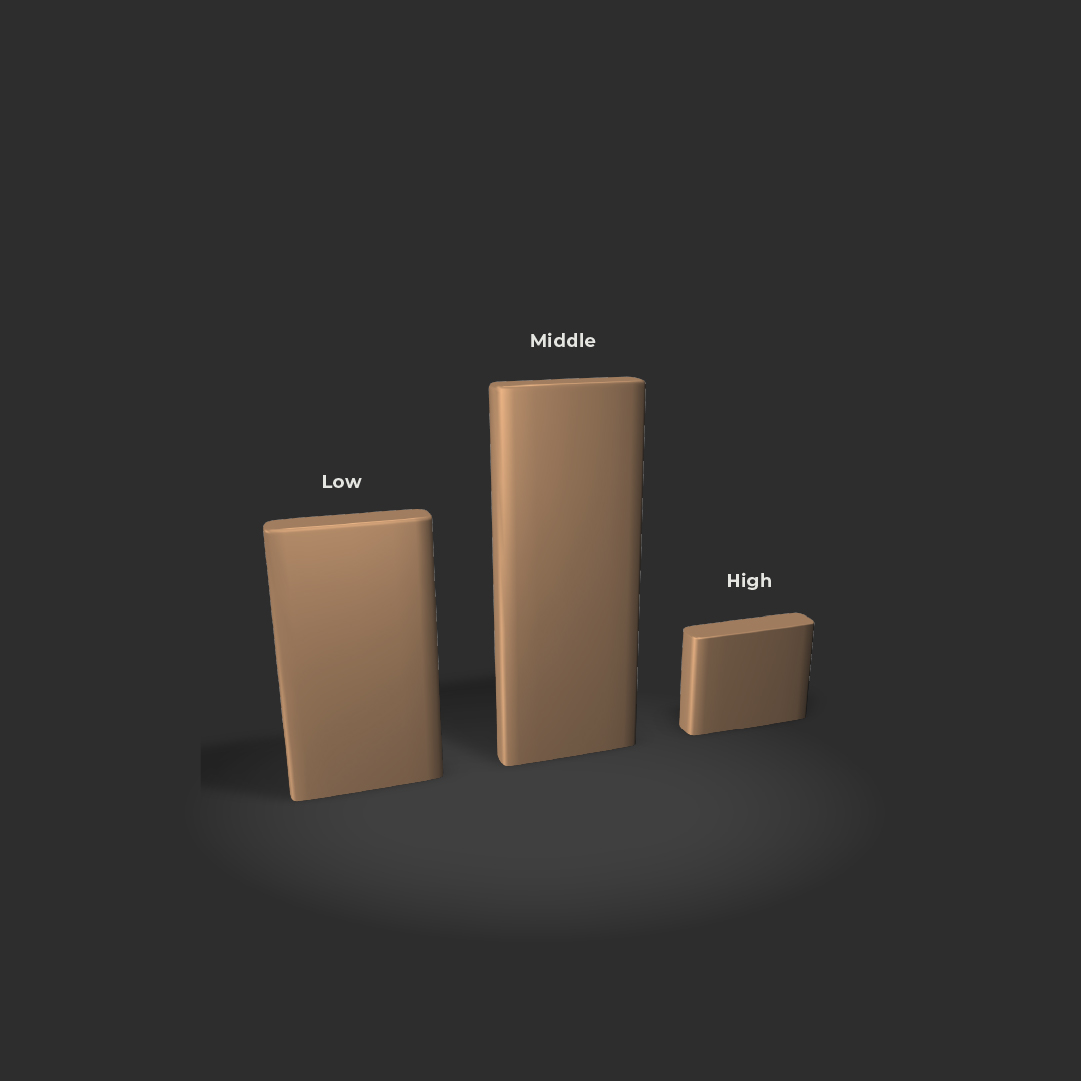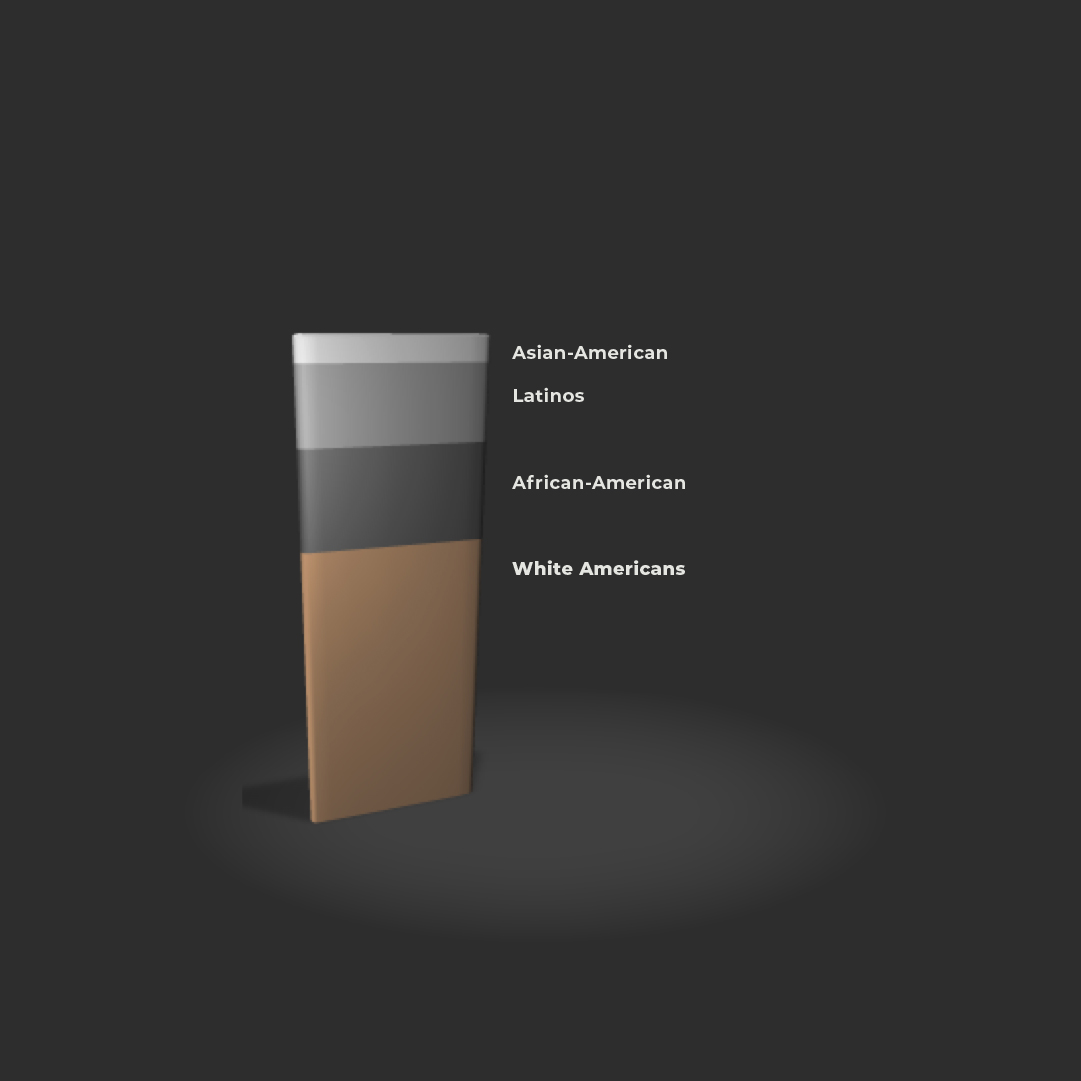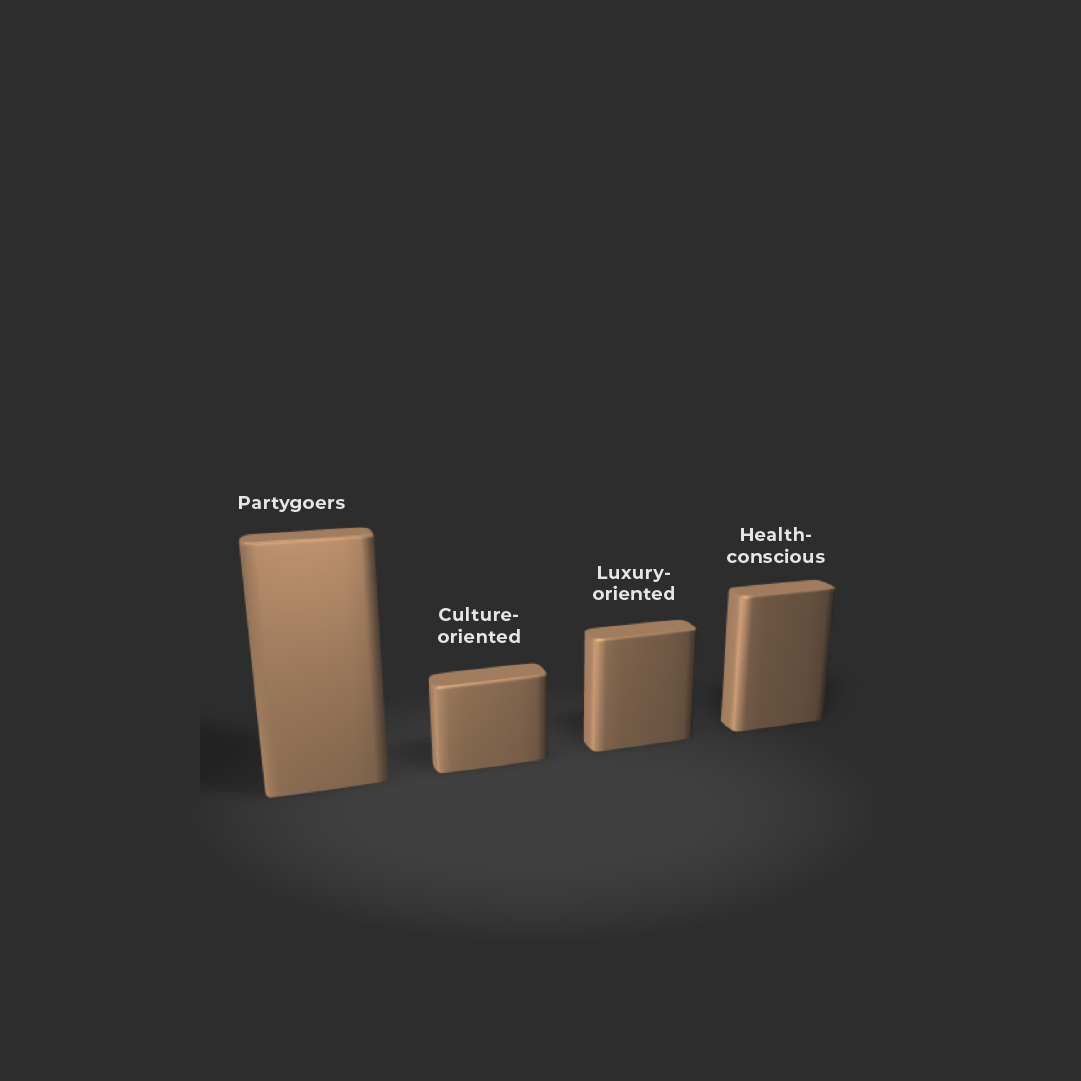EUROPEAN NIGHTLIFE: LIVELY AND DIVERSE.
The European nightlife scene is characterized by a rich variety of cultural, social, and economic influences. The dominant social groups vary by country and city, but there are some general trends and groups that can be identified. The following overview shows which social groups have the greatest influence on European nightlife, divided into age, gender, income, ethnicity, and lifestyle.
1
Age groups
in European nightlife
18-24: Young adults and students dominate the nightlife scene in student districts and inexpensive clubs. This group often attends parties and festivals.
25-34: This is the most active group in the European nightlife scene and can most often be found in clubs, bars, and at music events. This age group is willing to spend more money for an experience
35-44: This age group prefers high-end bars, lounges, and special event evenings. Guests in this group prefer high-quality experiences.
45+ Jahre: This age group does not often visit clubs but rather wine bars, jazz clubs, and cultural events.
2
GENDER
DISTRIBUTION
Men (approx. 55–60%): Men dominate European nightlife, especially in the traditional club and bar scene.
Women (approx. 40–45%): Women visit cocktail bars and lounges more often and they participate in special events, such as ladies’ nights.
3
INCOME -
GROUPS
Middle income (€30k–€70k): This income group regularly visits nightlife establishments and is the main target group of many clubs and bars.
High income (€70k+): This group prefers exclusive clubs, VIP services, and high-end lounges with expensive drinks.
Low income (<€30k): This group regularly visits student bars, inexpensive clubs, and free events.
4
ETHNIC
GROUPS
Caucasian Europeans (approx. 60–65%): They are the dominant group visiting clubs and bars in most European countries.
Southern European and Latino groups (approx. 15–20%): Particularly present in cities such as Barcelona, Madrid, and Milan, often in Latin-American clubs and salsa bars.
Afro-European (approx. 10–15%): Well represented in hip-hop and R&B clubs, as well as in cities with large African diaspora communities, such as London and Paris.
Asian Europeans (approx. 5–10%): Particularly present in karaoke bars, modern lounges, and high-end clubs in large cities.
5
LIFESTYLE AND INTERESTS
Partygoers and ravers: Young people who often visit clubs and music festivals, particularly in cities with big techno and house scenes, such as Berlin and Amsterdam.
Culture and music focus: Middle-aged people who prefer live music, jazz clubs, and cultural events.
Luxury-oriented guests: High-income guests who prefer luxurious bars, rooftop lounges, and VIP experiences.
Health-conscious guests: A growing group of guests who look for alcohol-free alternatives, vegan options, and healthy snacks.
WHO AND WHAT IS DOMINATING THE NIGHTLIFE SCENE IN THE U.S.?
To understand which groups are dominating the nightlife in the U.S., we have broken it down by age, gender, income, ethnicity, and lifestyle. Based on the data available from market research and studies, the following trends can be seen:
1
AGE GROUPS IN
U.S. NIGHTLIFE
18-24: This group can often be found in college cities and inexpensive clubs and bars. They prefer loud, energetic experiences.
25-34: This age group is the most active on the nightlife scene and regularly attends clubs, cocktail bars, and music events. They are willing to spend more and value high quality and experiences.
35-44: This group prefers luxurious bars and lounges and often participates in special event nights. They do not attend clubs very often.
45+: This group does not visit clubs very often but rather prefers wine bars, high-end restaurants, and events with live music.
2
GENDER
DISTRIBUTION
Men (approx. 55–60%): Men dominate the nightlife in the U.S., particularly in clubs and sports bars.
Women (approx. 40–45%): Women visit cocktail bars, lounges, and special ladies’ nights more often. They are being seen more frequently in high-end locations.
3
INCOME
GROUPS
Middle income ($50k–$100k): This group regularly participates in nightlife and is willingly to spend a lot on drinks, admission, and events.
High income ($100k+): This income group prefers exclusive locations, VIP areas, and expensive drinks.
Low income (<$50k): This group mostly visits inexpensive bars, student pubs, and looks for cheaper nightlife options.
4
ETHNIC
GROUPS
Caucasian Americans (approx. 60%): They dominate the general nightlife scene in most U.S. regions.
African Americans (approx. 15–20%): Well represented in hip-hop and R&B nightlife, particularly in cities such as Atlanta, New York, and Los Angeles.
Latinos (approx. 10–15%): This group is well represented in Latin-American clubs, salsa bars, and at Latin music events.
Asian Americans (approx. 5–10%): Particularly present in karaoke bars, high-end lounges, and in large cities such as San Francisco and New York.
5
LIFESTYLE AND INTERESTS
Partygoers: Young, energetic people who regularly visit clubs and music festivals.
Culture focus: Middle-aged people who are interested in live music, jazz clubs, and theater bars.
Health-conscious guests: People who look for alcohol-free and healthy options, such as smoothie bars and vegan lounges.
Luxury-oriented guests: People who visit high-end bars, rooftops, and exclusive VIP areas.

NewsletterStay Tuned, Stay informed
Subscribe to our Nightlife Newsletter and always be
up to date! Get all of the insider news and be first
to hear about new investment opportunities. Join the Nightlife Company.

